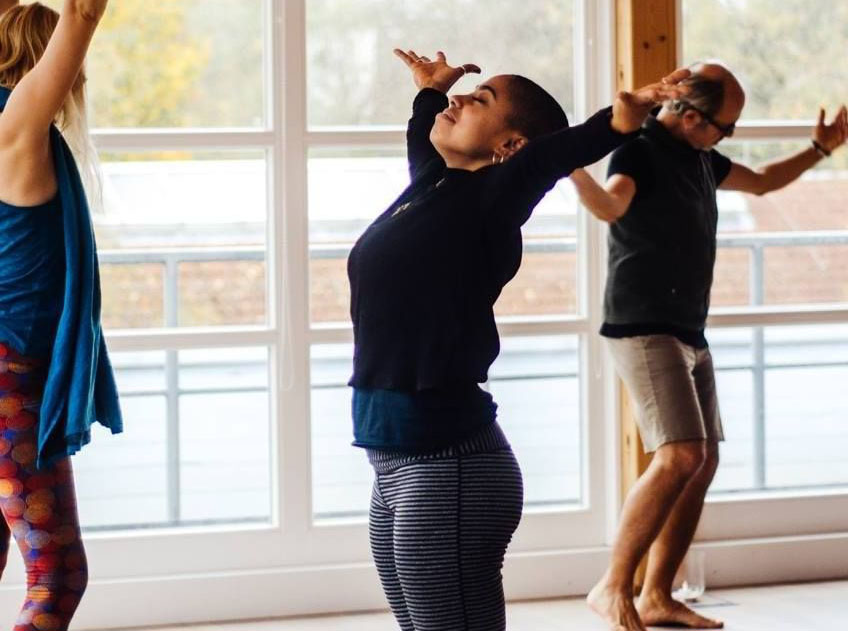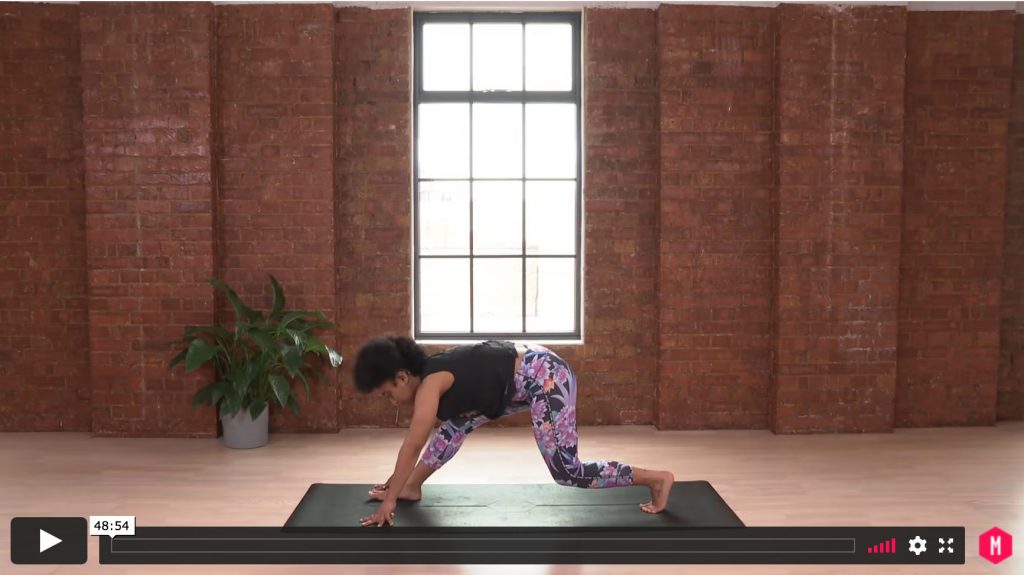
Have you been intrigued by the increasing number of somatic practices that are appearing? A little unsure of what somatic movement is and how it relates to yoga? In this article Ava Riby-Williams explains more about somatic movement and why we all need this right now.
What is a somatic practice?
The word Somatic comes from the Greek word Soma, which means “of the body”. Somatic practises ask, How can we come into a greater sense of embodiment and presence? It’s a simple question with millions of possibilities and details to experience within. Somatic Therapist and Healer, Sofia Papadopoulos who works 1:1 online and in London, says this work is about “using the body to bring more clarity and understanding of who we are, what we need and where we want to go.”
Why do we all need this so badly?
Can you experience, with no distance, how you are within your body? I feel like this is an enquiry that could benefit anyone, yogis included. A lot of the time I find that movement practices can be more focused on the appearance of the movement rather than the feeling of it. Have you ever been to a yoga class where you’ve been thinking about fitting or comparing your shape to that of the teacher or an “expert” yogi in the front row rather than feeling your way into a variation of the posture that feels right to you, in that moment?
Prioritising the feel over the look
The truth is, in general, we already seem to live in a society in which the merit of things is measured on their appearance rather than the feeling of them. The success of an individual is often measured on their salary/material possessions rather than how much they’re enjoying their life. Culturally in the UK, we often keep quiet about things that are annoying/hurting us in order to save face or stop people thinking we’re a nuisance. On a personal level, I sometimes catch myself acting in a certain way in order to impress someone I care about (my parents, teachers, someone I fancy at the time), with total disregard to the stress or activation I’m feeling inside in order to get their approval! It’s totally exhausting. I don’t want to practise my yogasana like this too.
I feel like most of us must be living with some level of disjunct between our feelings and our actions. A somatic approach to your yoga might be a good way to practise bringing your feelings and actions back into symbiosis. Remember- your yoga mat is your lab: a microcosm of your life. If you can build a practise of presence and feeling inspired action on your mat, you’re more likely to be able to move through the macrocosm of your life with it.
Why might this be hard to do?
Embodiment won’t always feel lovely and yummy. As well as freedom and joy, grief, fear and chronic pain also exist within the body. Us humans can dissociate from our senses to prevent ourselves from feeling more of these challenging emotions. It’s a coping mechanism which is sometimes necessary in moments of danger or fight and flight, but in the long term can cause more emotional, physical and spiritual hurt if we stay stuck there.
If you feel some resistance to practising in a somatically aware way, there’s a chance that (even subconsciously) you’re staying away from some of this discomfort inside. This is very normal. Remember to be patient with yourself as you open up to exploring this territory. You might also benefit from speaking to someone- trusted and/or professional- about the things that are going on for you.
Can you give some tips for a more somatic approach to practice?
Here’s a step-by-step guide for re-entering the body, because I love a list. You could follow these steps before you start your asana practise, practise them during your asana, do them whilst cooking, on the bus or switch them up into a different order.
Start with a room scan
Notice the shapes, textures, colours you see in the space that you’re in. What can you hear? What can you smell or taste?
Experience the surface of your body in contact with your environment.
Wherever you are, you’re touching the earth, your clothes, the air (unless you’re naked in outer space)… how does this feel?
Take a few embodied breaths
These are breaths that you are open to feeling as you take them. The motion, the sound and the effect of your breath can open up all kinds of feels.
What do you feel on the inside of your body?
For instance, can you feel the inside of your hand? You don’t necessarily need to move it or see it to feel it, and you don’t need to draw on your knowledge of anatomy from books in order to experience the feeling. Remember to slow down! The mind can travel very fast. It’s not always in present, physical reality. The body is. If you can’t get out of your head don’t beat yourself up, but try going slower and repeat the steps above.
Also make space to acknowledge emotions that you might be experiencing that are creating physical feelings. Eg. I’m excited- I feel butterflies in my tummy, or I’m angry- I feel hot and I’m clenching my jaw. This is a big key to more yogic living off of your mat. Emotions live in the body. If you can use your feeling and your senses to give you clues as to what emotions might be within you, your body can become a compass to guide your life into more alignment. The more I do this, the more I trust and LOVE myself, connecting to a sense of intuition that guides me day to day.
Where do we go from here?
Dive into curiosity and trust. Your body knows. I truly feel that revolutionary change starts from this place of feeling. As Sofia says, “By listening, moving and being with the felt sense of our experience, we can connect more intimately and authentically to ourselves; our feelings, our sexuality, creativity and our spiritual truth, we are then able to connect with others and with life itself in a similar way. Personal change = Global Transformation.”
>> Try this somatic yoga class with Ava Riby-Williams<<

About Ava Riby-Williams:
Ava is a creative and intuitive teacher, facilitator and artist who sparks curiosity and play. Her eclectic teaching focuses on finding presence in the moment, empowering students to become their own inner teachers and recognising ourselves as diverse divinity, in unity.
Ava’s teaching style is soulful, and challenging, yet trauma sensitive. So far in her life, she has explored performance arts, Non-Dual Saiva Tantra, the Hermetic principles, Ayurveda, Afrikan spiritual teachings, community youth work and music. Try one of Ava’s classes on MFML or find out more about Ava on her website, the creative soul collective.





Leave a Reply